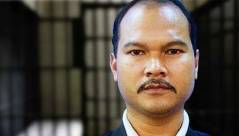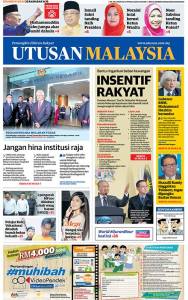‘
The Koran does not prohibit figural imagery. Rather, it castigates the worship of idols… [In] Islamic law, there does not exist a single legal decree, or fatwa, in the historical corpus that explicitly and decisively prohibits figural imagery, including images of the Prophet…the decree that comes closest…was published online in 2001 by the Taliban, as they set out to destroy the Buddhas of Bamiyan.

Prophet Muhammad sitting with the Abrahamic prophets in Jerusalem, anonymous, Mi‘rajnama (Book of Ascension), Tabriz, ca. 1317-1330. Topkapı Palace Library
Newsweek, Jan 9
In the wake of the massacre that took place in the Paris offices of Charlie Hebdo, I have been called upon as a scholar specializing in Islamic paintings of the Prophet to explain whether images of Muhammad are banned in Islam.
The short and simple answer is no. The Koran does not prohibit figural imagery. Rather, it castigates the worship of idols, which are understood as concrete embodiments of the polytheistic beliefs that Islam supplanted when it emerged as a purely monotheistic faith in the Arabian Peninsula during the seventh century.
Moreover, the Hadith, or Sayings of the Prophet, present us with an ambiguous picture at best: At turns we read of artists dared to breathe life into their figures and, at others, of pillows ornamented with figural imagery.
If we turn to Islamic law, there does not exist a single legal decree, or fatwa, in the historical corpus that explicitly and decisively prohibits figural imagery, including images of the Prophet. While more recent online fatwas can surely be found, the decree that comes closest to articulating this type of ban was published online in 2001 by the Taliban, as they set out to destroy the Buddhas of Bamiyan.
In their fatwa, the Taliban decreed that all non-Islamic statues and shrines in Afghanistan be destroyed. However, this very modern decree remains entirely silent on the issue of figural images and sculptures within Islam, which, conversely, had been praised as beneficial and educational by Muhammad ‘Abduh, a prominent jurist in 19th century Egypt.
In sum, a search for a ban on images of Muhammad in pre-modern Islamic textual sources will yield no clear and firm results whatsoever. » READ MORE…
Christiane Gruber is currently writing her next book, The Praiseworthy One: The Prophet Muhammad in Islamic Texts and Images. Some of her other work:
• Images of the Prophet Muhammad In and Out of Modernity: The Curious Case of a 2008 Mural in Tehran
• The Image of the Prophet between Ideal and Ideology: A Scholarly Investigation









